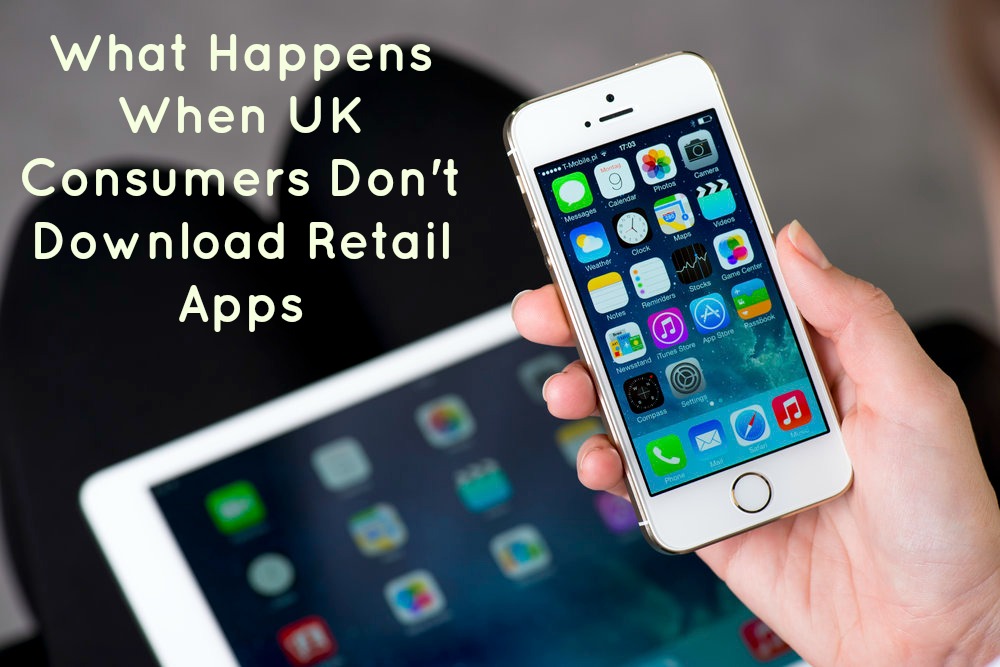Wasp Barcode Technologies: The Barcode Solution People
What Happens When UK Consumers Don't Download Retail Apps
 In the United Kingdom, 59% of consumers who use smartphones are not downloading retail apps since the apps don’t align with the in-store and website shopping experience. As stated in a Forbes article regarding retailers failing to offer an omni-channel experience to consumers, “UK retailers are letting down their customers by not investing in a quality mobile app that complements the in-store and website experience.”
In the United Kingdom, 59% of consumers who use smartphones are not downloading retail apps since the apps don’t align with the in-store and website shopping experience. As stated in a Forbes article regarding retailers failing to offer an omni-channel experience to consumers, “UK retailers are letting down their customers by not investing in a quality mobile app that complements the in-store and website experience.”

Deloitte’s fifth annual edition of the UK Mobile Consumer survey provides data of the mobile industry’s current trends. Key findings include:
- Over 32 million phones are purchased yearly in the UK
- About 53% of smartphone users check their phones within 5 minutes of walking
- The amount of 4G users soared from 8% to 25% in the last year
In addition, Deloitte conducted research that showed 76% of adults now own smartphones. With the high amount of potential consumers using smartphones, and the lack of consumers actually using apps to make purchases from their favourite retail store, the retail businesses in the UK might be in trouble.
[Tweet "76% of adults now own smartphones."]
Around the world there are so many businesses that have incredible
success stories due to mobile use in retail. However, Mobile apps shouldn’t be limited to big name brands like Ocado and Barclays Mobile Banking. In fact, this is the perfect time for small-to-medium sized businesses to invest in a mobile app that will provide a range of benefits to the organization.
Forbes again discusses one of the most important benefits of small to medium sized business having a mobile app, which is
building brand and recognition.
Brand and Recognition
When a business creates a successful mobile app it can greatly contribute to brand awareness. You essentially are given a blank canvas and can fill it out however you like, whether that involves recreating your image or simply allowing another outlet to boost your brand. Creating a mobile app might seem like a slow process at first but the more often you have potential consumers engaging in your app, the sooner you’ll see results and purchases will begin to skyrocket. According to the “
effective frequency”, hearing and/or seeing a brand around 20 times is what will get you noticed. So what if you
aren’t getting noticed 20 times a day? How does that affect business profitability?

Recognition and Profitability
According to Wasp Barcode’s
State of Small Business Report, 43% of small business owners are worried about probability. Since only 11% of UK consumers are interacting with retailers across all channels (stores, websites, mobile apps, etc.), this means there is no better time for retailers to begin implementing a strong omni-channel strategy to address and correct current app engagement among consumers. If retailers miss out on this opportunity, they are missing out on growth, expansion and profit. The mobile app,
Shopify, powers over 140,000 businesses. Shopify conducted their annual
Year in Review and discovered that in the past two years, mobile’s contribution to total sales increased by 175%.
Now that we’ve covered the need to implement a mobile app for your small-to- medium sized organisation, it’s important to know how to begin that process. All Business has provided a
12-Step Guide to Building Your Very First Mobile App. Those 12 steps include:
- Define Your Goal
Before you can truly begin, clearly define your purpose and mission.
- Begin Sketching
Visually conceptualize the main features you have in mind.
- Complete Research
Learning key features and mistakes of your competitors is the answer to creating something new and improved.
- Create a Wireframe and Storyboard
Wireframe allows your ideas and features to fuse into a prototype, and a storyboard will allow you to make connections between the screens.
- Define the Back End of your Mobile App
Drawing sketches of your servers, APIs and data diagrams will be a helpful reference for the developer.
- Test Your Prototype
The goal here is to concretize your app before it goes into the design process, and eventually the “real world.”
- Build the Back End
Your developer will need to set up servers, databases, APIs and storage solutions.
- Design App “Skins”
These are the individual screens needed for the app; essentially they will be high-resolution versions of your wireframes.
- Test Again
And again and again if you need to; there’s no such thing as being overconfident and prepared in your app.
- Revise and Continue to Build
After you receive feedback from potential future users, use these ideas to polish your app.
- Refine Details
Constantly take a look at your new app on multiple different platforms, such as an Andriod vs. an iPhone.
- Release
Understand the policy of the marketplace when it comes to releasing and publishing your app before you give the final “Go!”
These 12 steps might initially seem overwhelming and time consuming; however, this concept is truly a matter of “what you put in, you’ll get out.” By putting in the appropriate amount of effort your results will show.
When
42% of smartphones owners use their device to compare prices in-store, why not give them an easy way to purchase off of their device as well? By inventing in and implementing a good quality mobile app that aligns with your in-store and website experience, you automatically increase your brand awareness, recognition and increase your ability for profitability.
How would creating an app help your customers to find you online?
 In the United Kingdom,
In the United Kingdom, 



